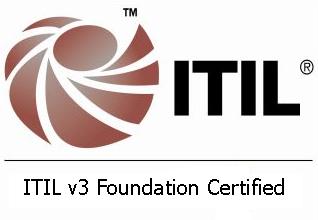April 24, 2018 by Alper Celik
IoT is a real phenomenon which continues to transform enterprises, cities, farms, industries and many more. Typical IoT environment is a complex set-up as various components need to come together to make sure technology works, so you can collect the data you need. I have been a sales person in IoT industry for more than 5 years. I have been working globally with many different countries, companies, cultures and backgrounds. I have seen companies transforming themselves, by the help of IoT and also many failed projects. Today I will try to sum-up which are the main drivers behind a successful IoT venture.

In essence, there are 2 types of IoT projects; Strategic or Tactical IoT. Strategic IoT projects are typically driven by the top management, linked to other parts of the organization and have a bit more clear business case behind. Where else Tactical IoT projects are usually driven by business units, executed mostly by internal resources and not linked to the overall business goals.
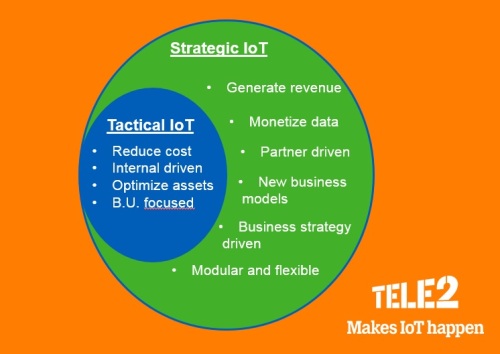
Both Strategic and Tactical IoT projects may or may not succeed depending on the ambition levels. However, I challenge my customers to think about their core business and how IoT can enable improvements on it. At the end of the day IoT is not what you are good at. Why not outsource the tech and focus on business value and data monetization. At the end of the day, you will collect a lot of sensor data and you need to have a plan how to monetize it. If IoT does not improve your core business, it will eventually fail because the underlying tech-ecosystem is rather complex and IoT requires continues vendor/technology/strategy improvement.
Now from pure technology perspective, the successful projects all had some common footprint behind; all IT systems (ERP, CRM, Billing, etc) are involved, over the air access, security and high availability are required. Dont be afraid to spend a bit more Capex to save a lot of Opex later on. You must build your IoT topology based on flexibility and adaptability as new standards, tech components and regulations will fade in.
Keep the long story short, IoT is a fast changing, rather complicated ecosystem. Therefore you need external know-how and consulting partner who will help you build budget, data monetization and manage operational aspects. Your vendors must provide world-class support, integration and implementation help. Do your homework and get ready for vendor and technology immaturity. Assess vendor and tech continuously. Last but not least, contact Tele2 IoT so we can bring world-wide best practices and know-how.
Alper CELIK
Global Sales Manager
TELE2 IoT
Posted in Big Data, IoT, M2M, Management, Tele2, Tele2 IoT, Telecom | Tagged ai, bigdata, euicc, IoT, M2M, tele2iot | Leave a Comment »
October 6, 2016 by Alper Celik
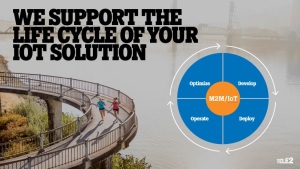 I am a simple sales guy, working with many different companies across the world, helping them getting their devices connected. I have customers in many different industries such as; telematics, smart metering, asset tracking/monitoring, security, health care, automotive and so on. Working with such a mix, gives me an opportunity to analyze what companies do with their IoT initiatives in different industries. In this blog post, I will share what I see is happening in real life based on my own personal experience.
I am a simple sales guy, working with many different companies across the world, helping them getting their devices connected. I have customers in many different industries such as; telematics, smart metering, asset tracking/monitoring, security, health care, automotive and so on. Working with such a mix, gives me an opportunity to analyze what companies do with their IoT initiatives in different industries. In this blog post, I will share what I see is happening in real life based on my own personal experience.
First of all, many companies are talking about IoT and dreaming to getting their business model changed from selling product to selling solutions/services. Because they want to differentiate their products, get closer to their end customers, better understand how/when/where/why their products are being used etc. I think there is a lot of focus on the technology side of IoT and a lot of companies are lost when it comes to what type of sensory data to be collected and how this data will be converted into increased revenue & reduced costs.
I will divide my experience into 2 separate chapters as Technology and Commercial parts. In my opinion IoT should be very much tied into a commercial goal and just to connect things will not be enough at the end to truly innovate. What I see in real life is that most of the companies start with solving a simple problem, which is nice – as they start small, but missing the big picture of the potential savings/improvements that could be achieved with that specific IoT solution. Continue Reading »
Posted in Big Data, IoT, M2M, Tele2, Telecom | Tagged alper, çelik, IoT, M2M, sales, solution selling, Stockholm, Sweden, tele2 | Leave a Comment »
October 22, 2015 by Alper Celik
 We use connected machines to perform variety of different tasks, ranging from car sensors that enable pay-as-you-drive auto insurance to remote monitoring of equipments to GPS tracking that monitors where the vehicles/containers are and how they are doing. This technology is typically called machine-to-machine (M2M) communications and provides significant value involving dozens of industries, such as lowering service costs with remote access, efficient energy utilization through real-time monitoring and creating new revenue streams by selling differentiated services. Continue Reading »
We use connected machines to perform variety of different tasks, ranging from car sensors that enable pay-as-you-drive auto insurance to remote monitoring of equipments to GPS tracking that monitors where the vehicles/containers are and how they are doing. This technology is typically called machine-to-machine (M2M) communications and provides significant value involving dozens of industries, such as lowering service costs with remote access, efficient energy utilization through real-time monitoring and creating new revenue streams by selling differentiated services. Continue Reading »
59.405916
17.942512
Posted in IoT, M2M | Tagged data SIM cards, IoT, M2M, machine to machine, SIM cards, Tele2 M2M, telecom | Leave a Comment »
April 25, 2014 by Alper Celik
 M2M and IoT solutions are in many ways all the same; a unique problem and a unique solution. “Where is my truck at the moment? Is my office protected well tonight? How is the patient doing?” All these questions are unique for a customer but there are some common rules that every M2M/IoT solution can benefit from. The solution collects some kind of data, communicates it back to a data centre, the company performs some kind of analysis and compares the results against expected or past performance levels.
M2M and IoT solutions are in many ways all the same; a unique problem and a unique solution. “Where is my truck at the moment? Is my office protected well tonight? How is the patient doing?” All these questions are unique for a customer but there are some common rules that every M2M/IoT solution can benefit from. The solution collects some kind of data, communicates it back to a data centre, the company performs some kind of analysis and compares the results against expected or past performance levels.
Connectivity, in this business flow, is one of the crucial components. While every M2M/IoT solution is specific, there are common needs for a trusted connectivity provider who will cope with your business requirements. But how do you recognize them? I will try to give you 5 big mistakes that will increase your M2M connectivity costs. Continue Reading »
Posted in IoT, M2M, Tele2, Telecom | Tagged alper, çelik, jasper wireless, M2M, M2M SIM cards, tele2 m2m global solutions | Leave a Comment »
December 5, 2013 by Alper Celik
 M2M and IoT is emerging with a higher speed than expected. The ecosystem is becoming mature and the players know where to position themselves. As the ecosystem converges with Cloud and big data, businesses need to get ready to address the new wave of connected devices and the intelligence they carry. I do not believe in the story of collecting all intelligence in the center, via the data delivered by edge devices. Because the agility, durability and security of the edge devices will directly impact the results of the total intelligence.
M2M and IoT is emerging with a higher speed than expected. The ecosystem is becoming mature and the players know where to position themselves. As the ecosystem converges with Cloud and big data, businesses need to get ready to address the new wave of connected devices and the intelligence they carry. I do not believe in the story of collecting all intelligence in the center, via the data delivered by edge devices. Because the agility, durability and security of the edge devices will directly impact the results of the total intelligence.
Agility in my term defines the ability of a connected device to adapt different applications. This requires running a flexible software environment that caters for different application requirements. Continue Reading »
Posted in Big Data, Cloud, IoT, java | Tagged alper, çelik, Business, IoT, IT, java, M2M, Stockholm, telecom | Leave a Comment »
November 19, 2013 by Alper Celik
 I should say for a Telecom operator to be successful on M2M requires some serious efforts. A dedicated M2M team (technical, support, operations, agreements, sales in the ground and a strong management etc), different KPIs and goals for the M2M unit, much more flexibility and support from the top management.
I should say for a Telecom operator to be successful on M2M requires some serious efforts. A dedicated M2M team (technical, support, operations, agreements, sales in the ground and a strong management etc), different KPIs and goals for the M2M unit, much more flexibility and support from the top management.
Europe is not doing fine economically and people are spending less and less on Telecom services. For Telcos to keep growing, they should invest in new areas like M2M, Cloud and Media & Entertainment Services. However, the success will not come quick and margins are not as good as we got in typical Telecom services. I see that more and more Telcos in Europe are taking serious steps in M2M and leaving the Cloud to IT providers; making M2M a bet of Telcos and Cloud for IT playes.
Teleco industry needs a new push and new units might bring that extra jump for growth. M2M is an opportunity for Telcos and for sure requires a different approach and skills. My recommendation is, select your fight and go for it. But do not expect quick wins.
Posted in Big Data, Business, Cloud, ICT, IoT, M2M, Stockholm, Sweden, Telecom | Tagged alper, çelik, Cloud, IoT, M2M, Stockholm, Sweden, telco cloud, telecom | Leave a Comment »
July 19, 2013 by Alper Celik
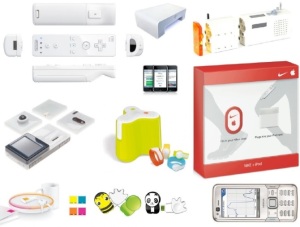 I am part of the M2M global solutions team at a multinational Telecom company and one of our main goal is to follow the trends and make sure that the whole company is moving to the right directions. Being a Telecom company the first thing we want to win is of course the connectivity and also the device platform services. Continue Reading »
I am part of the M2M global solutions team at a multinational Telecom company and one of our main goal is to follow the trends and make sure that the whole company is moving to the right directions. Being a Telecom company the first thing we want to win is of course the connectivity and also the device platform services. Continue Reading »
Posted in Big Data, Business, Cloud, IoT, M2M, Telecom | Tagged alper, çelik, business opportunities, internet of things, IoT, Kista, M2M, Stockholm, tele2, telecom | 1 Comment »
July 10, 2013 by Alper Celik
What is the secret of success for Telecom operators in M2M? Selling few kb of data per device? Building deeper connections with enterprise customers? Learning how to sell a “solution”? I think all of these plus the ability to store & analyze data collected from the devices.
About 80% – 90% of the world’s data is unstructured, and most businesses don’t even attempt to use this data to their advantage. Imagine if you could afford to keep all the data generated by your business? Even more important, keep & analyze the most important data for you. For example, storing and analyzing terabytes of data over time might not add nearly as much value as analyzing 1 gigabyte of really important, impactful information in real time. Imagine if you had a way to analyze this data.
Posted in Uncategorized | Tagged alper, çelik, big data, business intelligence, Cloud, crm, erp, hadoop, hdfs, M2M, store, Sweden, tele2 | Leave a Comment »
July 4, 2013 by Alper Celik
4G (LTE) is just super cool!
I have been using LTE for quite some while and I just love it. It is much faster than even fix line and I do not want to connect to any wi-fi just because my 4G is the best. Yes, this is how i feel about it as an end-user. I love it and I am willing to pay an amount that will not cost me an arm and a leg. But, what is that amount which Telecom operators should ask for?
As a group product manager in a multi-national Swedish telecom operator, this is what a lot of people around me are thinking about. I have made some observations and these are my conclusions for a profitable 4G (LTE) business for Telcos.
4G (LTE) Succcess Factors:
1- wide and functioning coverage
2- wide selection of 4G (LTE) handsets Continue Reading »
Posted in Tele2, Telecom | Tagged 4g, alper, çelik, bucket prices, Business, group product management, lte, pricing, Sweden, tele2, telecom | Leave a Comment »
June 18, 2013 by Alper Celik
Communications service providers (CSPs) are traditionally conservative, more focused on internal product innovation, targets mass-market services rather than niche-oriented. But CSPs now have a strategic business challenge; they are not growing fast enough. Subscriber numbers are still growing at a high rate in the emerging markets, but this rate is much smaller in developed markets. Here in the Nordics, we see huge competition with brutal price wars and hopeless fight for growing market shares. Meanwhile, competition worldwide has increased tremendously and ARPU (avrg revenue per user) is not keeping pace with the additional network costs associated with modern time, high-bandwidth services like mobile TV, HD video and the likes.
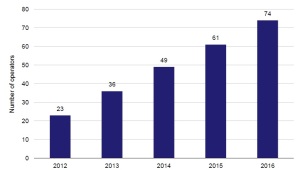
Graph 1- Operators with a commercial web services offering, worldwide
Continue Reading »
Posted in Cloud, M2M, Tele2, Telecom | Tagged alper, API, çelik, B2B, Business, Cloud, Cloud Computing, M2M, open APIS, telecom | Leave a Comment »
Older Posts »










